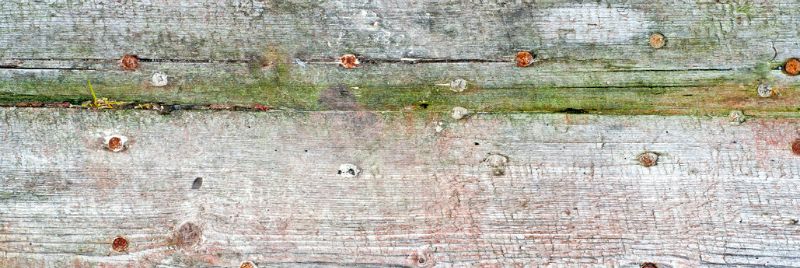Dry Rot in Foundation Wood

It is not an uncommon problem for buildings to experience problems with dry rot in the wood that it sitting on the building’s foundation. This can prove to be a problem as rotting wood can destabilize the whole building, so it is something that needs to be prevented or treated as soon as possible.
Why does Dry Rot Occur?
Somewhat surprisingly, dry rot is usually present as a result of too much moisture. When a building is constructed, the foundation is normally made from concrete. This concrete is then usually covered by a plastic or waterproof barrier, which will prevent water from getting in contact with the wood, which will then be put on top. If the barrier is not fit, we can expect moisture to seep into the wood.
Even though it might look dry, cement releases moisture and sucks in moisture from the surrounding area for years to come. And when this moisture is then absorbed by the wood, we can start to see signs of dry rot. This problem is so serious that it is now a legality to fit the waterproof barrier between the concrete and wood.
Preventing Dry Rot
The main form of prevention of this happening, of course, is by fitting a waterproof barrier between the two materials – usually as a plastic sheet. This means that although the concrete will continue to release and absorb moisture, it cannot enter the area where the wood is.
It is also a good idea to try to treat the wood to give an impermeable protection so that if it does come in contact with moisture – whether from the concrete or soil or another source, such as ventilation problems or even a leaking pipe – you are less likely to have dry rot problems.
Detecting Dry Rot
When wood which is affected by dry rot is visible, it is easy to spot. The wood looks like it is disintegrating, and it is obvious that it is not good. However, it is rarely the case that this wood is so exposed. So, what are the tell-tale signs that you might be being affected by dry rot in your house?
- Musty smell
- Floorboards or walls which feel spongy or soft
- Cracking or shrinking wood
- Bubbling paint
Fixing Dry Rot
So now that you know that you have dry rot, what do you do about it? Depending on the severity and location of the problem, you will probably need to get professionals to help you.
There are generally four steps to the process:
- First, the areas of rotting wood are exposed – parts of the wall or floor might have to be removed.
- The rotted wood will be removed – having fitted supports to prevent damage to the rest of the building.
- The area around the rotted wood will be treated with fungicide.
- The wood that was removed will be replaced with new wood, and the whole area will be treated to avoid dry rot forming again.
Prevention is better than cure, and the best way to prevent dry rot from forming on your wood is by installing a waterproof membrane and protecting the wood at the point of construction. You also want to ensure water is not leaking into your home and prevent it with either exterior foundation waterproofing, foundation crack repair, or other methods.
For more information about foundations and preventing dry rot, get in touch with Conterra Foundation and Repair today.